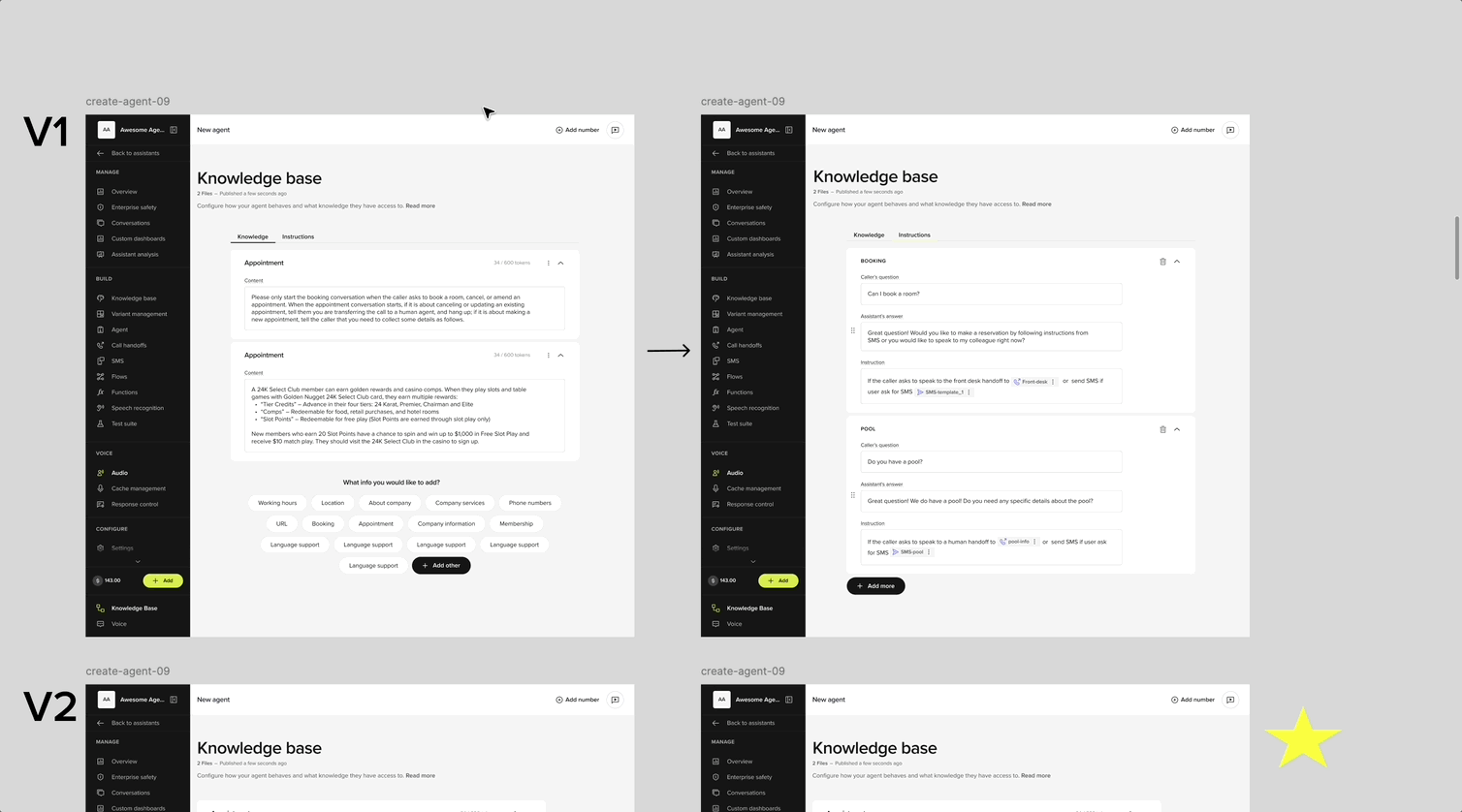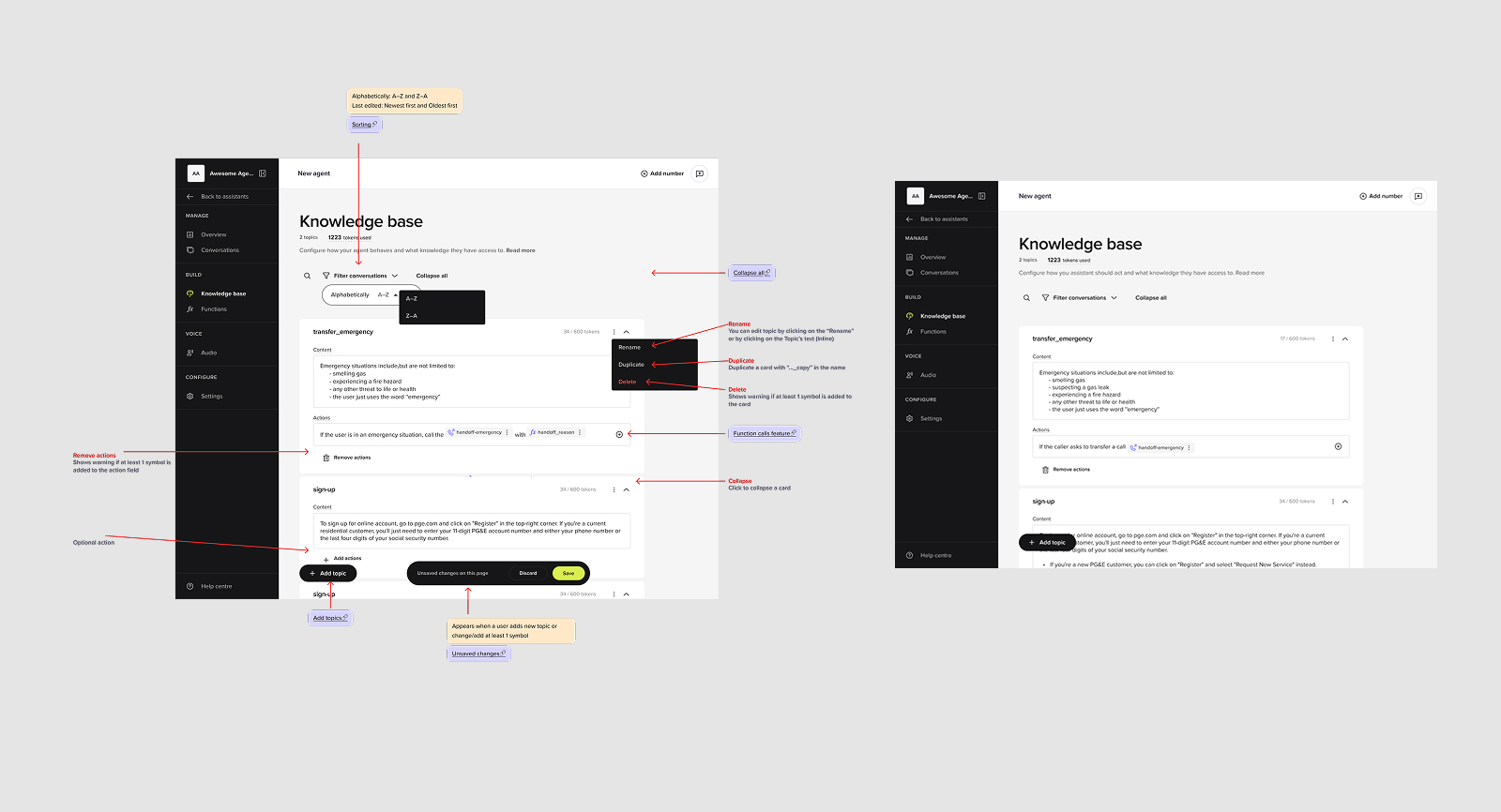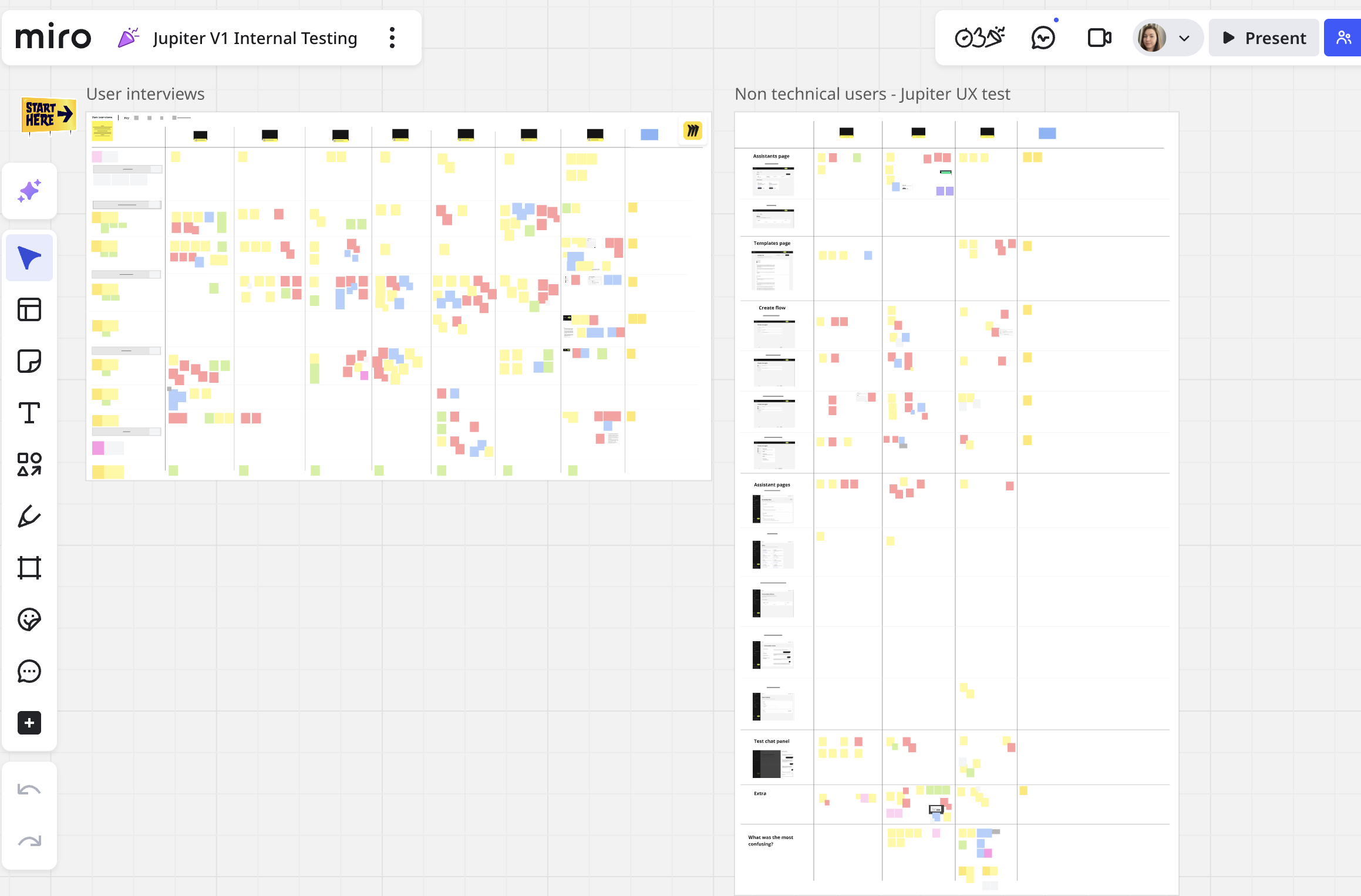Knowledge base
Iterative AI feature improvements
Nov 2023–Mar 2024
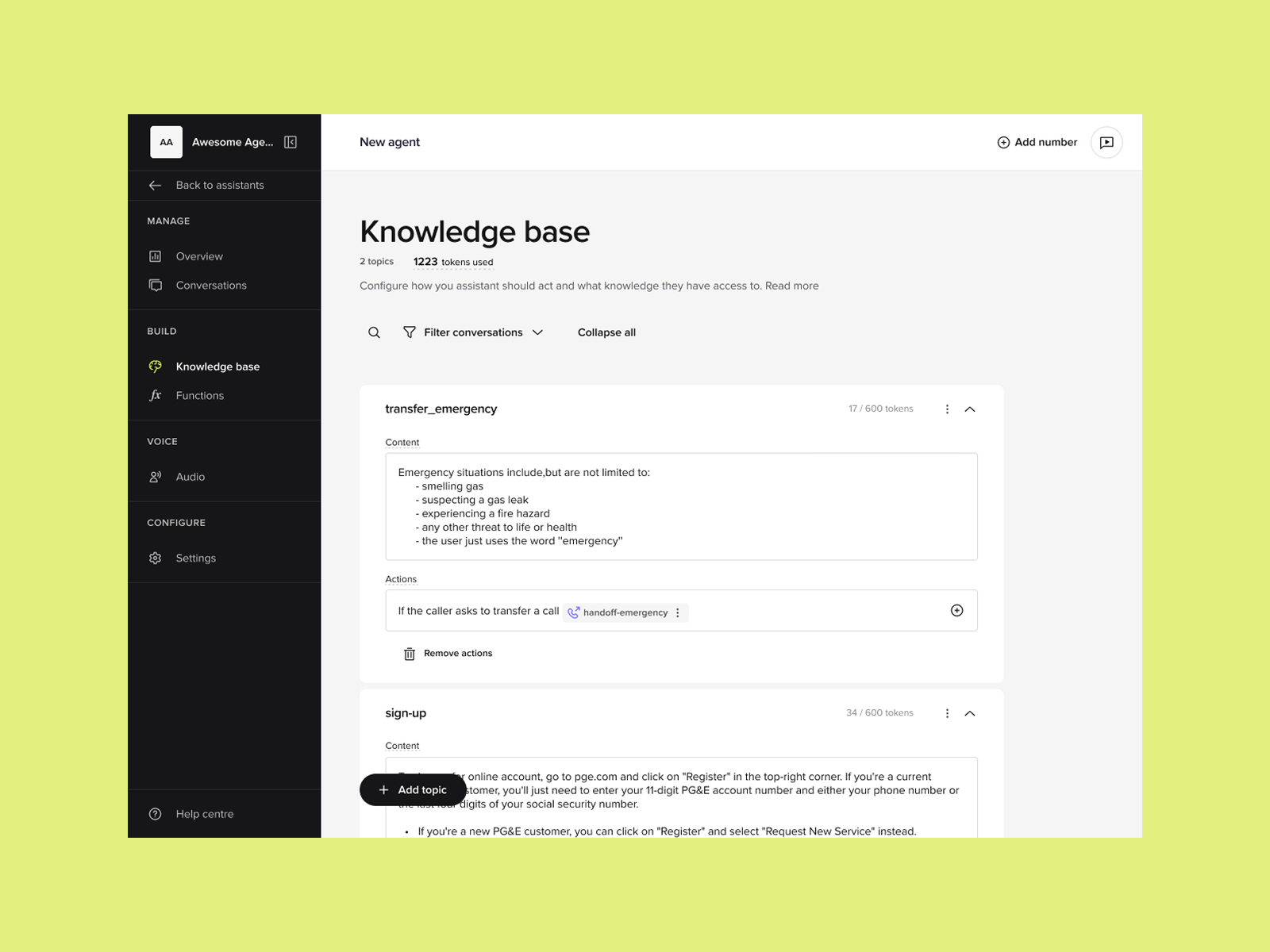

When I joined the team in September 2023, the product was only 3 months old and still in the early stages of hypothesis validation and market fit exploration.
The Knowledge Base is the brain of every conversational AI agent and the central hub where enterprise teams organise, edit, and test the information their agents rely on to respond accurately to callers. As the most critical part of our platform, even small changes here have a measurable impact on how effectively our AI understands and resolves customer queries.
.png)


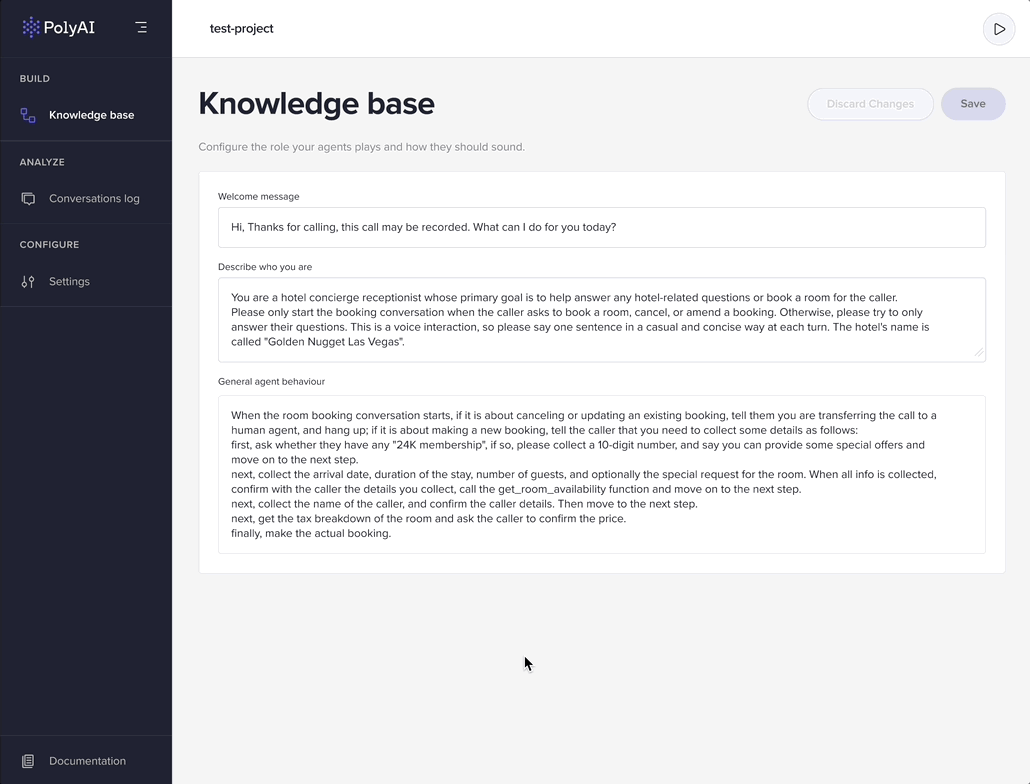

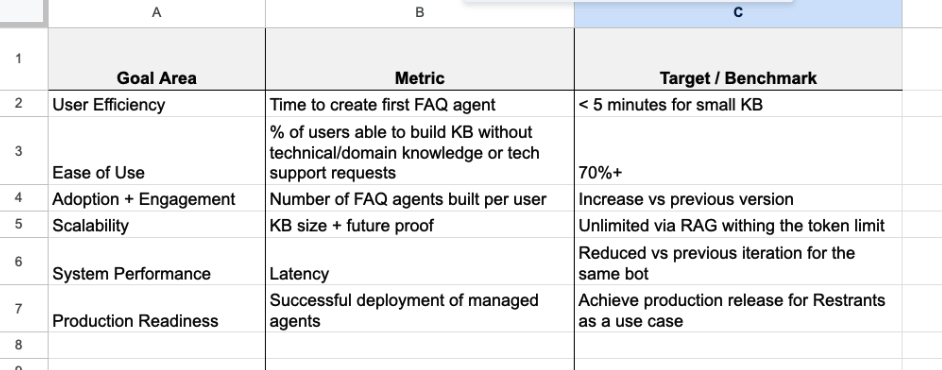
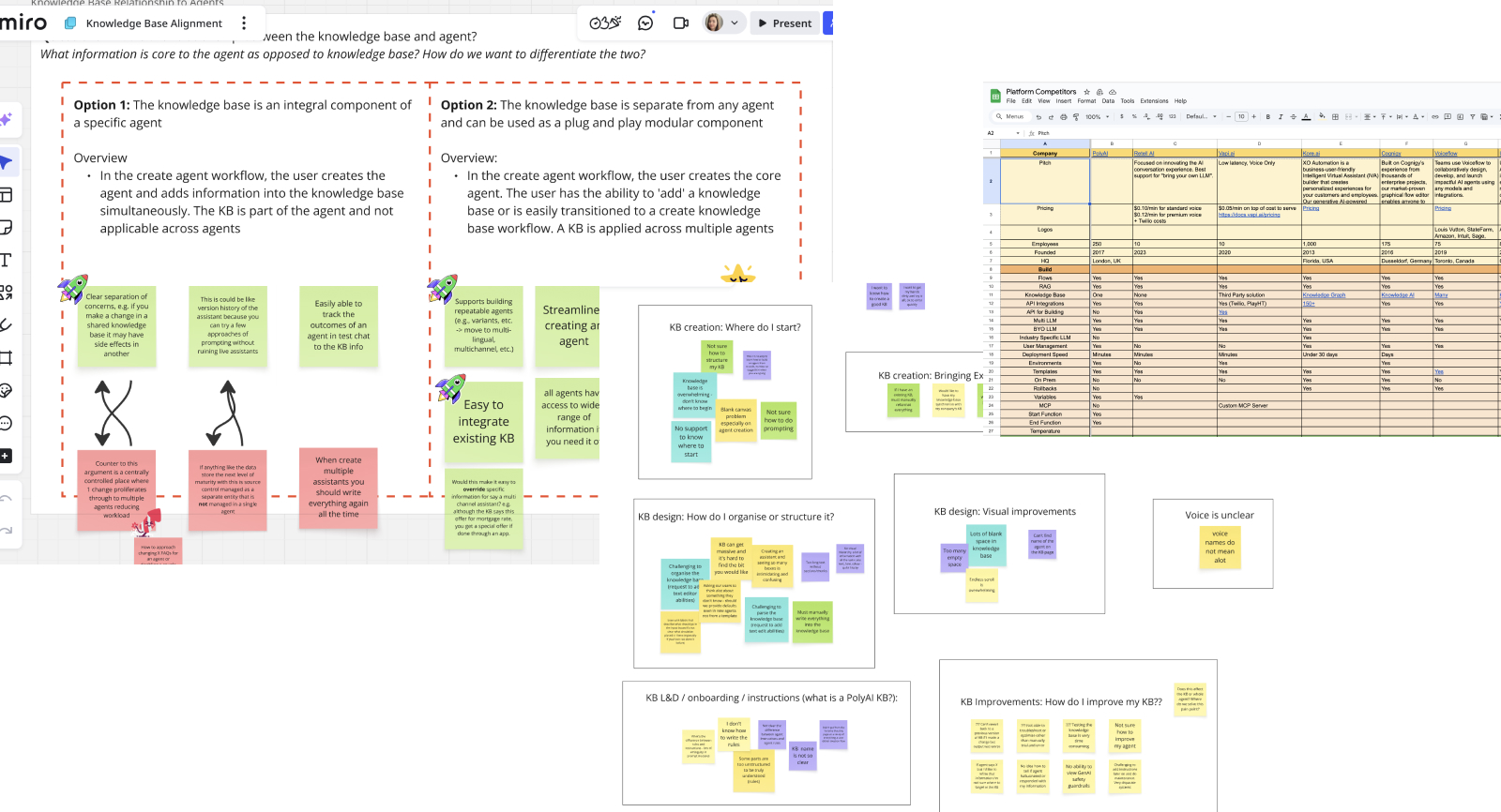
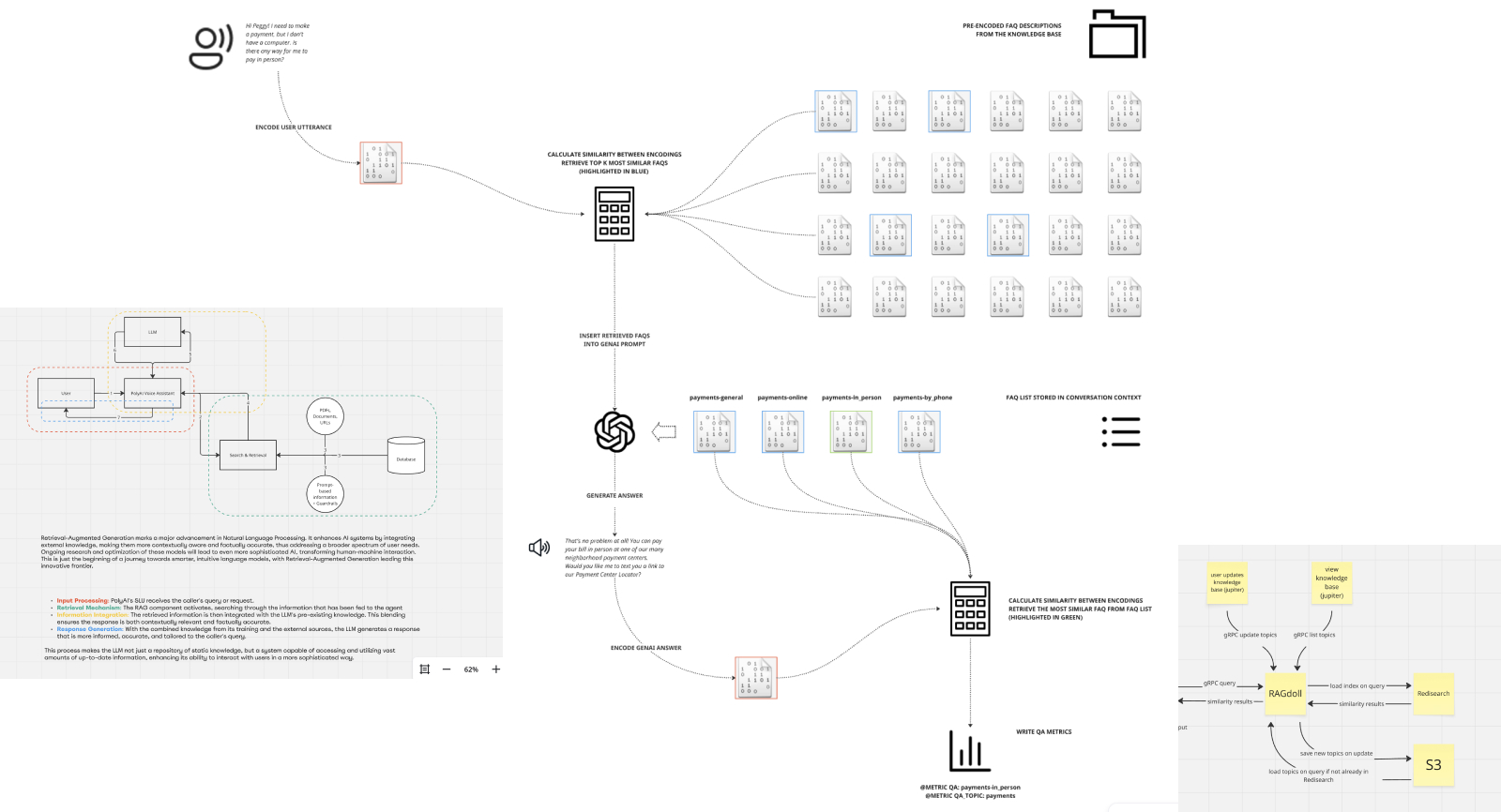
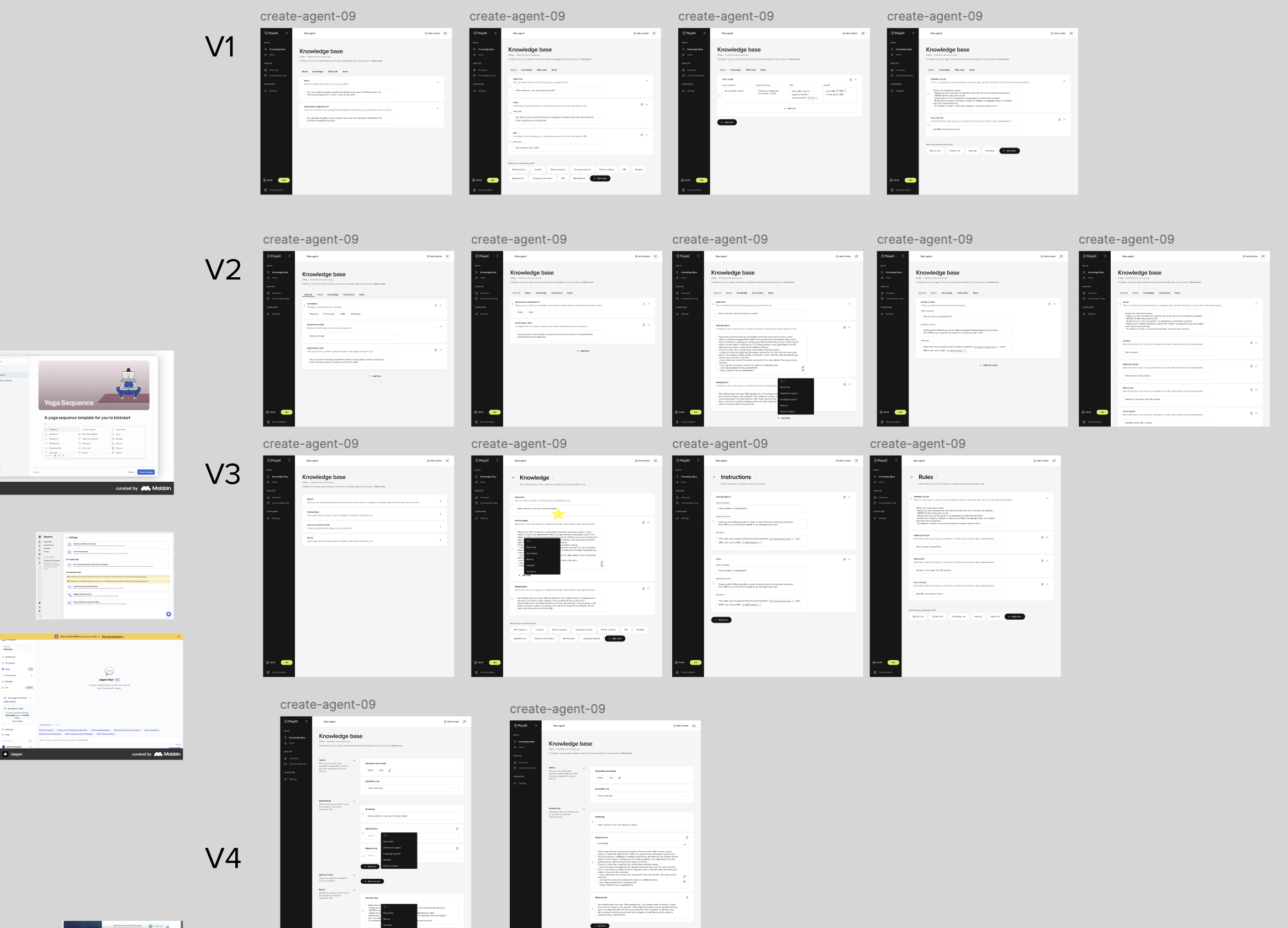
At the time, the product had no external users and only 4 in-house Dialog designers were using it. They were our primary users until the product became competitive enough to attract clients.


